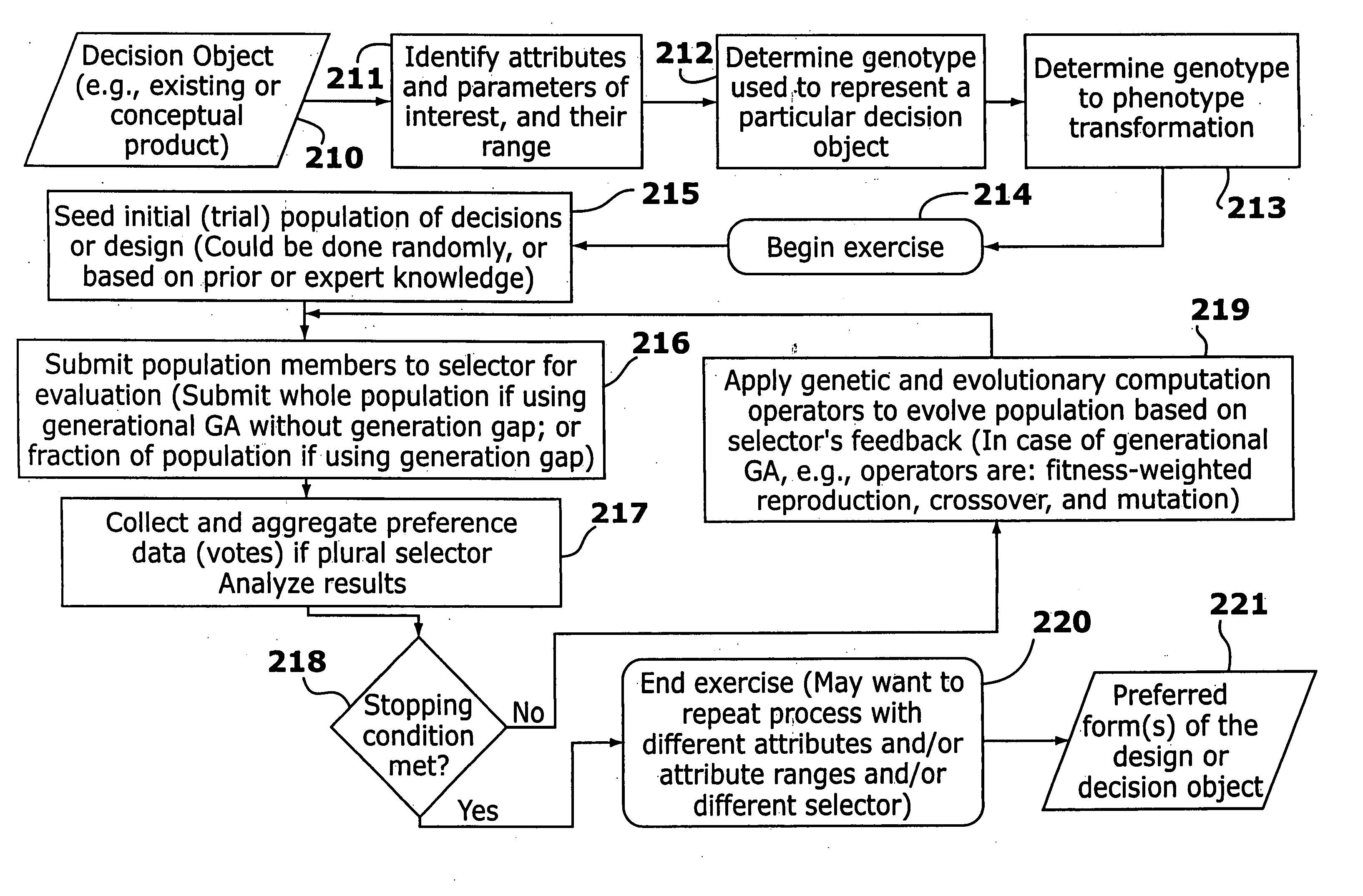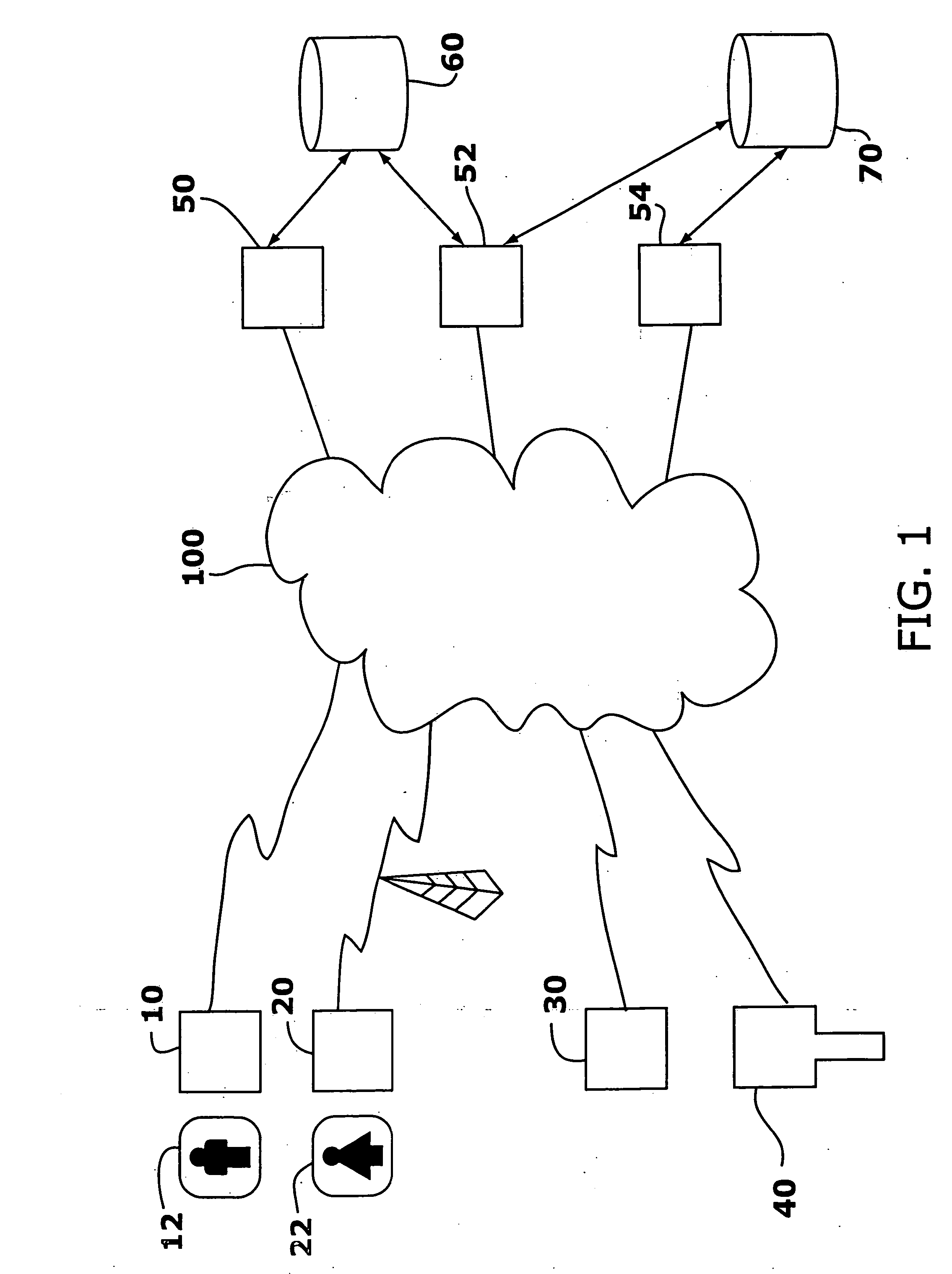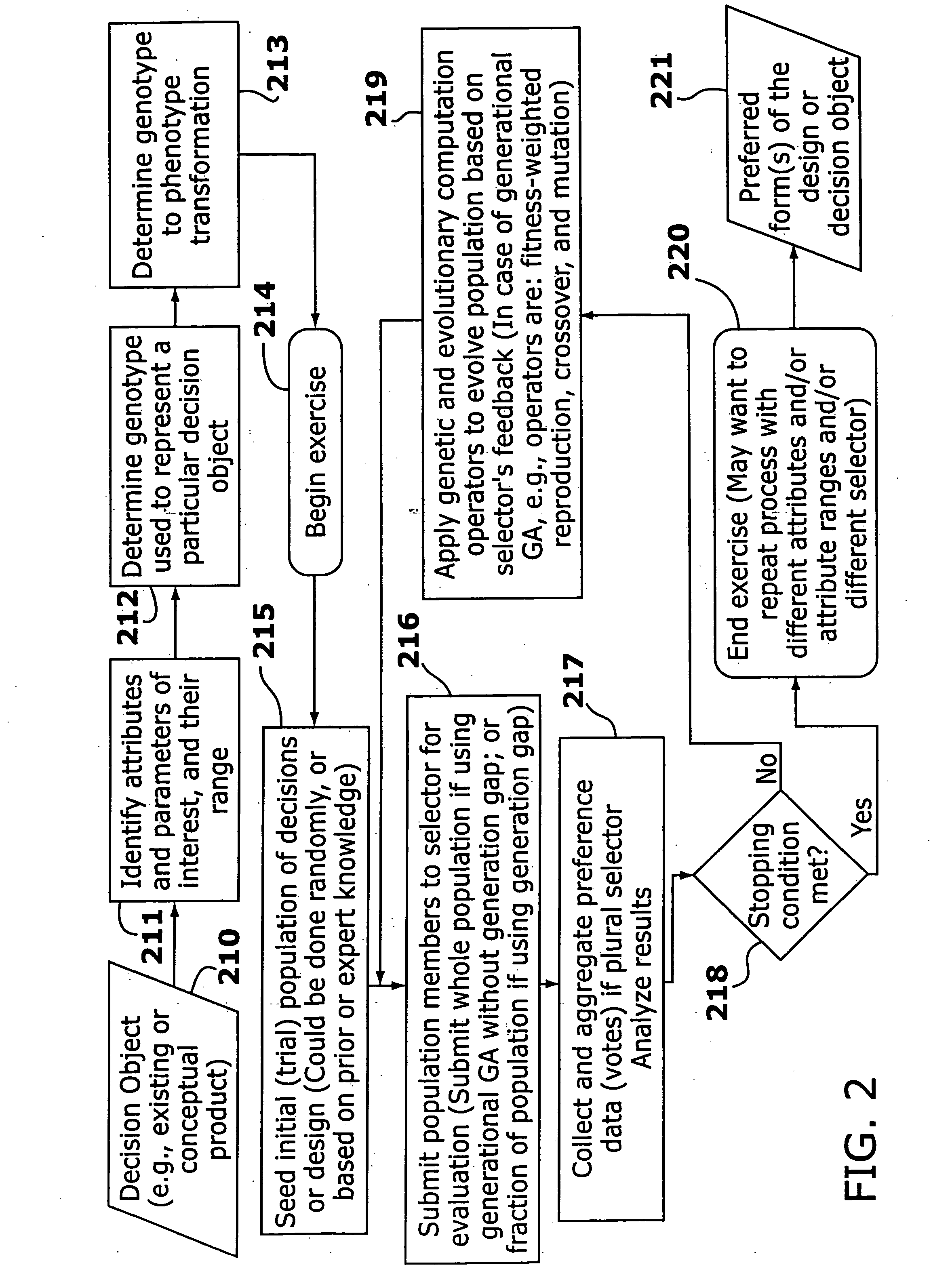Method and apparatus for evolutionary design
a technology of evolutionary design and methods, applied in the field of methods and apparatus for evolutionary design, can solve the problems of affecting the development of some products, affecting the quality of products, and extending the development lead time of some products to many years, and achieve the effect of facilitating a new form of market research
- Summary
- Abstract
- Description
- Claims
- Application Information
AI Technical Summary
Benefits of technology
Problems solved by technology
Method used
Image
Examples
Embodiment Construction
[0074]FIG. 1 shows one embodiment of an environment in which the present invention may be used. Selectors may use one or more client systems 10, 20, 30, 40 to communicate with one or more server computing systems 50, 52, 54 over a network 100. The network 100 can be a local-area network (LAN) such as an Ethernet network or a wide area network (WAN) such as the Internet or the World Wide Web. Client systems 10, 20, 30, 40 can be connected to the network 100 through a variety of connections including standard telephone lines, LAN or WAN links (e.g., T1, T3, 56 kb, X.25), broadband connections (ISDN, Frame Relay, ATM), and wireless connections. The connections can be established using a variety of communication protocols (e.g., TCP / IP, IPX, SPX, NetBIOS, Ethernet, RS232, and direct asynchronous connections). For example, the network 100 may be a corporate intranet connecting decisionmakers in an organization to a centralized decision engine, or it may be a secure extranet or virtual pr...
PUM
 Login to View More
Login to View More Abstract
Description
Claims
Application Information
 Login to View More
Login to View More - R&D
- Intellectual Property
- Life Sciences
- Materials
- Tech Scout
- Unparalleled Data Quality
- Higher Quality Content
- 60% Fewer Hallucinations
Browse by: Latest US Patents, China's latest patents, Technical Efficacy Thesaurus, Application Domain, Technology Topic, Popular Technical Reports.
© 2025 PatSnap. All rights reserved.Legal|Privacy policy|Modern Slavery Act Transparency Statement|Sitemap|About US| Contact US: help@patsnap.com



